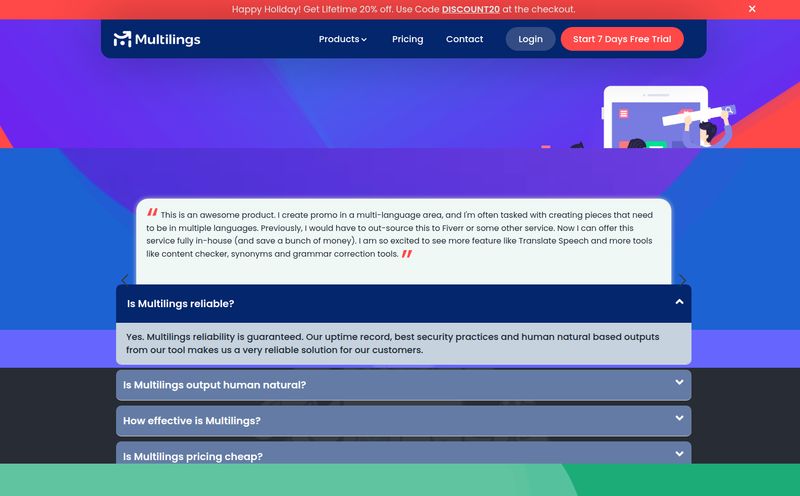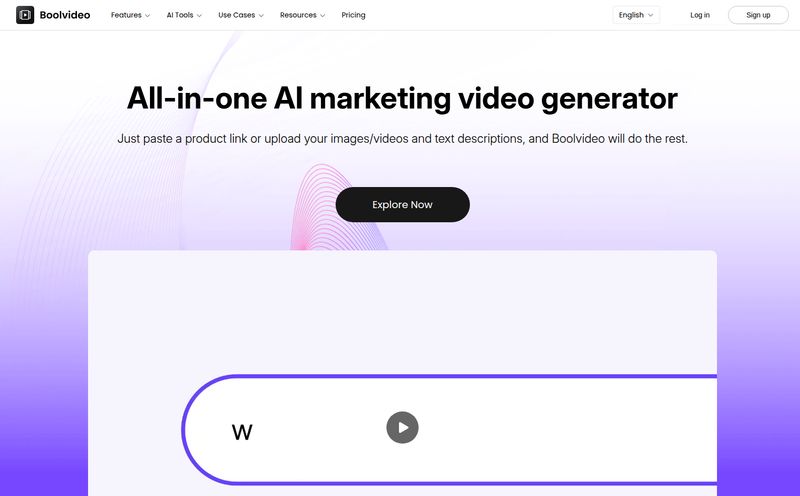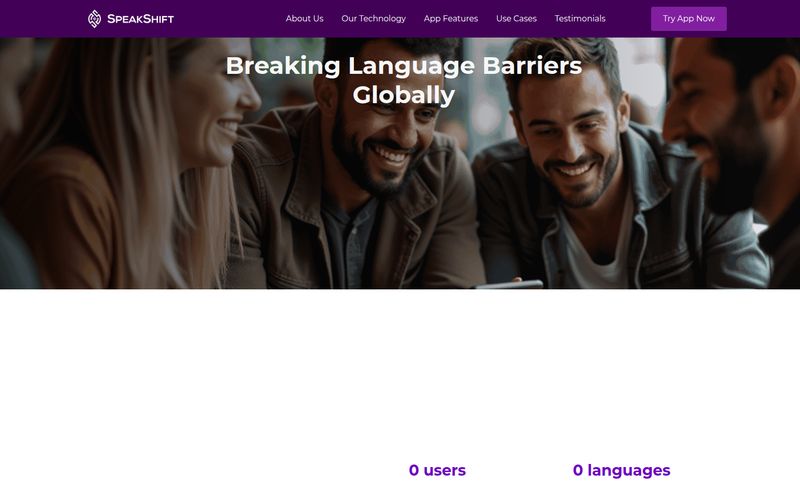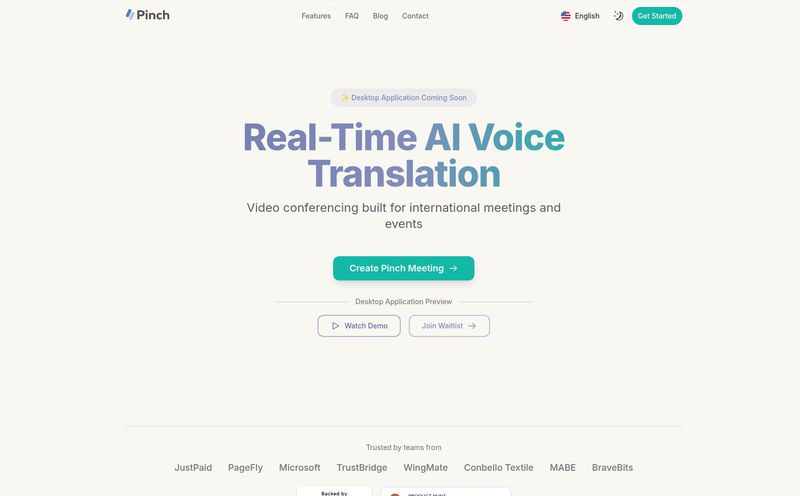Let’s have a little chat. For years, I’ve seen countless clients and colleagues sweat over web accessibility. It’s often the last thing on the checklist, a frantic, pre-launch scramble to avoid getting slapped with a demand letter. We spend all this time on pixel-perfect designs, killer copy, and intricate SEO strategies, only to realize our beautiful creation is a digital brick wall for a huge chunk of the population. It’s a mess.
We’ve all seen the accessibility overlay widgets that promise a one-click fix. And, let's be honest, most of us in the industry have a healthy skepticism about them. They feel like putting a band-aid on a broken leg. So when another AI-powered accessibility tool comes along, my first instinct is to raise an eyebrow. But WeAccess.Ai caught my eye because it seems to be aiming for something more. It's not just a widget; it’s positioned as a whole ecosystem. So, I decided to take a closer look.
So, What Is WeAccess.Ai, Really?
At its core, WeAccess.Ai is a service that uses artificial intelligence to help make digital content accessible to people with disabilities. But the term “digital content” is where things get interesting. Most tools in this space are laser-focused on websites. WeAccess.Ai, however, casts a much wider net. They're talking about a whole suite of solutions for:
- Websites (the usual suspect)
- Mobile Applications (iOS and Android)
- Media Content (like videos and podcasts)
- Digital Documents (PDFs, Word docs, the works)
- Even Printed Content (which, I admit, made me do a double-take)
Think of it less like a simple plugin and more like an accessibility command center for your entire brand. It’s an ambitious scope, and it suggests they understand that a user's experience with a company doesn’t just live on a .com address anymore. It’s everywhere.

Visit WeAccess.Ai
The Big Deal About AI in This Space
Why even bring AI into this? Well, manual accessibility audits are incredible. They’re the gold standard. But they are also expensive and time-consuming. A thorough audit on a large e-commerce site can take weeks and cost a small fortune. And here’s the kicker: the moment you push a new product update or a blog post, your perfect compliance score can go right out the window. It’s a constant battle.
The promise of AI, as pitched by companies like WeAccess.Ai, is to automate a huge chunk of this process. The AI can theoretically scan code in real-time, identify issues like missing alt text or poor color contrast, and in some cases, even apply the fix on the fly. This isn’t about replacing human experts—I don’t think we’re there yet, or ever will be. It's about giving those experts, and overwhelmed developers, a powerful assistant that can handle the high-volume, repetitive tasks, freeing them up to focus on the more complex, nuanced accessibility challenges that only a human can solve.
A Look Inside the WeAccess.Ai Toolkit
Okay, let’s get into the specifics of what they’re offering. I like to think of their services in a couple of different buckets.
For Your Website and Apps
This is the bread and butter. The Web Accessibility Suite is designed to bring a site in line with standards like the Web Content Accessibility Guidelines (WCAG). It involves AI-driven analysis and continuous monitoring. The Mobile Accessibility Suite does the same for your native apps. One thing to keep in mind here, and this is a practical consideration, is that a solution like this for mobile will likely require some SDK (Software Development Kit) integration. That’s not a red flag, but it is a conversation you need to have with your dev team. It’s not just a switch you flip.
Going Beyond the Screen
This is the part that genuinely impressed me. The focus on Media, Document, and Printed Content Accessibility is a big differentiator. How many times have you clicked a link to a “helpful guide” only to get a completely inaccessible PDF? It happens all the time. WeAccess.Ai offers services to remediate these files. Their media solutions could involve generating captions or audio descriptions, and the printed content part seems geared towards creating accessible versions of physical materials. This shows a holistic understanding of the problem that I appreciate.
The Good, The Bad, and The AI-Powered
No tool is perfect. Let's break down my takeaways into what I really liked and what gives me pause.
What I’m Optimistic About
The comprehensive nature is the biggest win. Managing accessibility across different platforms is a nightmare, and having a centralized approach is a powerful idea. I’m also a huge fan of the continuous monitoring aspect. A one-and-done audit is a snapshot in time; a living, breathing website needs a living, breathing solution to keep it compliant. This approach acknowledges that reality.
Some Things to Keep in Mind
Now for the reality check. The effectiveness of any AI is only as good as its programming and the content it’s working with. For a simple brochure site, an AI solution might catch 95% of issues. For a wildly complex, JavaScript-heavy web application, it will almost certainly need human oversight. So, manage your expectations.
The other point, and this is a personal pet peeve, is the pricing. It’s not listed on their site. You have to contact them. I get it – they’re likely building custom, enterprise-level packages. But the lack of transparency can be a hurdle for smaller businesses just trying to figure out if a tool is even in their ballpark. Lastly, the previously mentioned SDK integration for mobile is a factor. It just adds a step to the process that teams need to plan for.
Let’s Talk About the Price Tag
So, how much does WeAccess.Ai cost? The short answer is: 🤷♂️
As I said, they use a “contact us for a quote” model. This usually means the price is highly variable and depends on things like your site’s traffic, the complexity of your content, and which of their suites you actually need. While I always prefer transparent pricing tiers, this approach does make some sense for a service this broad. The needs of a small local business are vastly different from a global corporation like Nike or Apple. My advice is to go into the conversation with a clear idea of your needs and budget.
But Why Should You Even Care About Accessibility?
Sometimes we get so caught up in the technical and legal aspects that we forget the “why.” The business case for accessibility is massive. According to the CDC, 1 in 4 adults in the United States has some type of disability. That’s a huge potential audience you’re ignoring if your site is unusable for them. From an SEO perspective, many accessibility best practices—like proper heading structures, alt text for images, and clear link text—are also just good on-page SEO. Google rewards user-friendly sites, and an accessible site is inherently more user-friendly.
And then there’s the human element. It’s just the right thing to do. The internet should be for everyone. Period.
Final Verdict on WeAccess.Ai
So, is WeAccess.Ai the magic wand that will solve all our accessibility woes forever? Of course not. No such thing exists. However, it represents a very interesting and, I think, promising approach. It's ambitious, comprehensive, and built on the idea that accessibility isn't just a website problem, but a total brand experience problem.
I see it as a powerful force multiplier. It won’t replace your talented developers or the need for human empathy in design, but it could seriously streamline the process, catch errors you’d otherwise miss, and help you maintain compliance in our chaotic, constantly-updating digital world. If you’re a medium-to-large organization struggling to get a handle on your accessibility across multiple platforms, I think starting a conversation with them is a very smart move.
Frequently Asked Questions
What is WeAccess.Ai in simple terms?
WeAccess.Ai is a service that uses AI to find and fix accessibility issues on websites, mobile apps, digital documents, and even in media. It helps businesses become more user-friendly for people with disabilities and meet legal requirements like the WCAG.
How does the AI in WeAccess.Ai actually work?
The AI scans the code and content of your digital properties in real-time. It looks for common accessibility barriers, such as missing image descriptions (alt text), poor color contrast, or confusing navigation for screen readers. In many cases, it can automatically apply fixes.
Can WeAccess.Ai replace manual accessibility testing?
No, and it's not meant to. AI is excellent for catching a high volume of common issues and for continuous monitoring. However, complex accessibility problems often require the nuanced understanding and problem-solving of a human expert. It's best used as a tool to support, not replace, manual efforts.
What accessibility standards does it help with?
The primary goal is to help businesses align with the Web Content Accessibility Guidelines (WCAG) 2.1 and 2.2 at various levels (A, AA, AAA), which are the global standards. This, in turn, helps with compliance for laws like the Americans with Disabilities Act (ADA) in the U.S.
Who is this service best for?
Given its comprehensive scope and custom pricing model, WeAccess.Ai seems best suited for medium to large-sized businesses and enterprises that manage multiple digital platforms (web, mobile, etc.) and need a scalable solution for maintaining accessibility.
How can I find out the pricing?
You need to contact WeAccess.Ai directly through their website for a consultation and a custom quote. There is no public pricing information available.
Reference and Sources
- W3C Web Accessibility Initiative (WAI): https://www.w3.org/WAI/standards-guidelines/wcag/
- CDC Disability Impacts All of Us Infographic: https://www.cdc.gov/ncbddd/disabilityandhealth/infographics/disability-impacts-all.html



